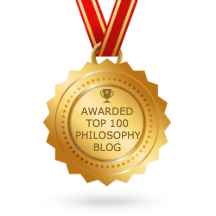 ...is the title of a book soon to be released by Bloomsbury Academic as part of its Science, Ethics and Innovation series, edited by Daniela Cutas and Sarah Chan, with one chapter contributed by myself and Thomas Hartvigsson (on how to apply the best interest of children standard to the issue of what sort of families to allow), plus others by, e.g., Adrienne Asch, Melinda Roberts, Kerry Lynn Macintosh and a number of other distinguished scholars in whose company I'm very proud to be.
...is the title of a book soon to be released by Bloomsbury Academic as part of its Science, Ethics and Innovation series, edited by Daniela Cutas and Sarah Chan, with one chapter contributed by myself and Thomas Hartvigsson (on how to apply the best interest of children standard to the issue of what sort of families to allow), plus others by, e.g., Adrienne Asch, Melinda Roberts, Kerry Lynn Macintosh and a number of other distinguished scholars in whose company I'm very proud to be....examines, through a multidisciplinary lens, the possibilities offered by relationships and family forms that challenge the nuclear family ideal, and some of the arguments that recommend or disqualify these as legitimate units in our societies.And the full table of contents runs like this:
That children should be conceived naturally, born to and raised by their two young, heterosexual, married to each other, genetic parents; that this relationship between parents is also the ideal relationship between romantic or sexual partners; and that romance and sexual intimacy ought to be at the core of our closest personal relationships -- all these elements converge towards the ideal of the nuclear family.
The authors consider a range of relationship and family structures that depart from this ideal: polyamory and polygamy, single and polyparenting, parenting by gay and lesbian couples, as well as families created through current and prospective modes of assisted human reproduction such as surrogate motherhood, donor insemination, and reproductive cloning.
Chapter 1: Daniela Cutas and Sarah Chan, Introduction: Perspectives on Private and Family Life
Chapter 2: Julie McCandless, The Role of Sexual Partnership in UK Family Law: the Case of Legal Parenthood
Chapter 3: Mianna Lotz, The Two-Parent Limitation in ART Parentage Law: Old Fashioned Law for New-Fashioned Families
Chapter 4: Christian Munthe and Thomas Hartvigsson, The Best Interest of Children and the Basis of Family Policy: The Issue of Reproductive Caring Units
Chapter 5: Joanna Scheib and Paul Hastings, Donor-conceived Children Raised by Lesbian Couples: Socialization and Development in a New Form of Planned Family
Chapter 6: David Gurnham, Donor-conception as a ‘Dangerous Supplement’ to the Nuclear Family: What can we learn from parents’ stories?
Chapter 7: Susanna Graham, Choosing Single Motherhood? Single Women Negotiating the Nuclear Family Ideal
Chapter 8: Mary Shanley and Sujatha Jesudason, Surrogacy: Reinscribing or Pluralizing Understandings of Family?
Chapter 9: Adrienne Asch, Licensing Parents: Regulating Assisted Reproduction
Chapter 10: Simon Căbulea May, Liberal Feminism and the Ethics of Polygamy
Chapter 11: Maura Irene Strassberg, Distinguishing Polygamy and Polyamory Under the Criminal Law
Chapter 12: Dossie Easton, Sex and Relationships: reflections on living outside the box
Chapter 4: Christian Munthe and Thomas Hartvigsson, The Best Interest of Children and the Basis of Family Policy: The Issue of Reproductive Caring Units
Chapter 5: Joanna Scheib and Paul Hastings, Donor-conceived Children Raised by Lesbian Couples: Socialization and Development in a New Form of Planned Family
Chapter 6: David Gurnham, Donor-conception as a ‘Dangerous Supplement’ to the Nuclear Family: What can we learn from parents’ stories?
Chapter 7: Susanna Graham, Choosing Single Motherhood? Single Women Negotiating the Nuclear Family Ideal
Chapter 8: Mary Shanley and Sujatha Jesudason, Surrogacy: Reinscribing or Pluralizing Understandings of Family?
Chapter 9: Adrienne Asch, Licensing Parents: Regulating Assisted Reproduction
Chapter 10: Simon Căbulea May, Liberal Feminism and the Ethics of Polygamy
Chapter 11: Maura Irene Strassberg, Distinguishing Polygamy and Polyamory Under the Criminal Law
Chapter 12: Dossie Easton, Sex and Relationships: reflections on living outside the box
Chapter 13: Kerry Lynn Macintosh, Human Cloning and the Family in the New Millenium
Chapter 14: Melinda Roberts, Moral and Legal Constraints on Human Reproductive Cloning
You can follow the book on its Facebook page to receive notification of publication, ordering opportunities, and so on.








woww amazing
ReplyDelete